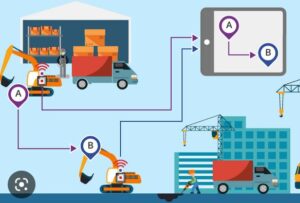RFID asset tracking system that utilises radio frequency identification tags to monitor tools, equipment and other items within a business. The data collected helps optimise asset use and increase inventory levels.
RFID systems of https://ramprfid.com/solutions/rfid-asset-tracking/ are being adopted across various industries and businesses. However, companies should consider some critical factors before implementing an RFID system.
Passive RFID
 RFID asset tracking is a popular technology in numerous industries, such as manufacturing, healthcare and logistics. Enterprises depend on accurate asset locations for various operational needs that can be met using multiple technologies like BLE-based RTLS solutions or passive RFID tags. Understanding how these two types of RFID work helps enterprises select the most suitable option for their specific business requirements.
RFID asset tracking is a popular technology in numerous industries, such as manufacturing, healthcare and logistics. Enterprises depend on accurate asset locations for various operational needs that can be met using multiple technologies like BLE-based RTLS solutions or passive RFID tags. Understanding how these two types of RFID work helps enterprises select the most suitable option for their specific business requirements.
Passive RFID transmits radio frequency (RF) waves through an antenna to power up and communicate with a reader. The tag typically takes the form of a square or rectangular piece of plastic, metal, or other material with either an adhesive or paper face.
Passive RFID tags of https://ramprfid.com/solutions/rfid-asset-tracking/ don’t generate their signal and thus cannot transmit as much data as active or semi-passive tags. As a result, passive tags tend to have shorter read ranges and limited storage capacity.
Passive RFID systems, however, are less expensive and can be used in various applications like supply chain management, race timing, file tracking, smart labels, etc. Plus, they work great with automatic readers and handheld scanners alike.
Hospitals can minimise contamination and save time on linen counting by using passive RFID stickers to track garments. These tags can be placed on patient gowns or other clothes returned to the hospital for washing.
Passive RFID is an ideal option for asset-tracking applications that don’t require extensive infrastructure and don’t need high accuracy levels. However, weighing the advantages and drawbacks before implementing such a system is essential: cost per tag is lower, and the required infrastructure is cheaper than with active tags, but accuracy will be lessened.
Active RFID
RFID (Radio Frequency Identification) is technology companies use to monitor their assets, from computers to livestock. The system works by attaching tags on these assets, which transmit radio waves to readers at fixed locations. This data can then be utilised for improving asset utilisation and inventory levels.
Active RFID can be an ideal solution for companies that monitor large equipment. It helps streamline production by locating tools and equipment on demand while providing real-time tracking that guarantees the company can keep up with demand.
Monitoring employee performance with timesheets can be an effective tool. For instance, managers clearly understand how long a mechanic takes to repair service tools.
By doing so, they can effectively monitor these crucial assets and avoid losses, thefts and stockouts.
Mobile RFID Readers
RFID asset tracking is an economical solution to monitor fixed and mobile equipment. This type of system has applications across various industries, such as manufacturing, medical facilities, and transportation.
When deciding if an RFID system suits your business, the type of assets to track should be considered. Fax machines, medical supplies and laptops are common examples.
Tracking these assets requires an RFID reader to read your items’ tags. Typically, these readers are battery-operated and portable.
Handheld RFID readers are ideal for businesses with many assets to track. These devices allow you to locate your items and update them on the spot quickly.
Some RFID readers even come with an app enabling you to get real-time tracking data on your smartphone. It makes locating items simple and guarantees they aren’t stolen or misplaced.
RFID tags are faster to scan than barcode systems and don’t require direct contact with the tracked item. It makes them ideal for assets that may get damaged or moved around frequently, like fax machines and office chairs.
In addition to increasing productivity, an RFID system can also help you save money. By tracking assets, you ensure they remain in optimal condition and reduce the number of “ghost assets” – items purchased but never used by your company.
RFID systems can improve health and safety by enabling you to upload data about inspections and other health requirements. You also have the power to restrict the use of assets that have failed or missed safety checks, helping guarantee your employees don’t do anything that could jeopardise themselves or others.
